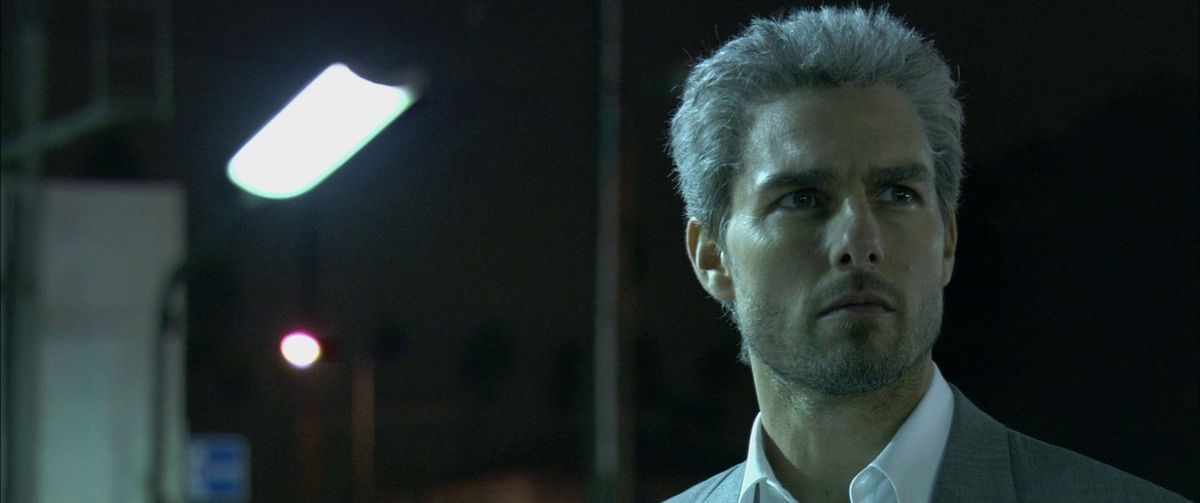Fans of Guillermo del Toro — the Oscar-winning director of The Shape of Water, Pan’s Labyrinth, Pacific Rim, Hellboy, and more — may catch something interesting in DC Comics’ superhero movie Blue Beetle if they’re sharp-eyed and on the alert. It goes by in a heartbeat, without comment: Just a flash of a golden beetle on a TV screen, and a moment of ominous music. No one comments on it, and it has no bearing on the plot. But it’s a neat little reference — and a startlingly appropriate one.
The image is from del Toro’s 1993 directorial debut Cronos, about a man who becomes a sort of vampire through accidental, mechanical means, then has to defend himself from outside forces who envy his new immortality. Which may not sound much like Blue Beetle at first glance, but the story parallels are extensive enough that it’s worth wondering how much its screenwriter, Gareth Dunnet-Alcocer, had Cronos on the brain when choosing what to adapt from the comics. (Del Toro, a longtime DC Comics fan, might also have taken some inspiration from Blue Beetle — the original version of the character, created in 1939, didn’t get powers from a mystical scarab, but his 1960s incarnation, archaeologist Dan Garrett, did have one.)
Cronos is a stylish, bloody debut that moves at a slower pace and takes on a more serious tone than most of del Toro’s later work. But it still clearly shows his sensibilities, particularly his love of gleefully grotesque, startling imagery. Made for a modest $2 million — at the time, the second-highest production budget ever granted a Mexican movie — the film made a major splash, winning the Palme d’Or at Cannes, and sweeping the Ariel Awards, Mexico’s highest honor for movies, winning eight awards, including Best Picture, Director, Story, and Screenplay.
Cronos follows Jesús Gris (del Toro favorite Federico Luppi), an elderly antiques dealer who accidentally encounters a golden, mechanical scarab in the course of his work. When he cleans and activates it, the thing abruptly attaches itself to him, injecting him with an unknown substance. At first, he’s alarmed and disgusted. But when the injection reverses his aging, and he becomes younger and stronger, he begins returning to it regularly for injections — first guiltily, then with the increasing confidence of an addict getting his fix. One problem, though, is that his restored youth comes with a powerful thirst for blood and an aversion to sunlight. Another is that a powerful, dying businessman knows the scarab exists, and has sent his thuggish nephew (another del Toro favorite, Ron Perlman) to acquire it by any means necessary.
All of which neatly parallels Blue Beetle’s action. A mystical, mysterious scarab that connects with its owner’s flesh and changes him into something more powerful? Check. That host recoiling in horror from the scarab at first, but gradually coming to rely on it? Check. A scheming capitalist baron who wants the scarab and is willing to kill the current owner to get it? Check. A powerful second-in-command who ends up being the movie’s primary villain while repeatedly trying to get the scarab? Check. A lot of body horror and Cronenbergian grotesquerie? Well… Blue Beetle does directly emulate Cronenberg, but Cronos is much bloodier, with more traditional horror elements, particularly as Jesús fights his new bloodlust, then gives into it.
:no_upscale()/cdn.vox-cdn.com/uploads/chorus_asset/file/24858632/Bleed.png)
Thematically, Cronos and Blue Beetle are very different entities — the latter is a standard superhero origin story with a lot of Mexican-American trappings, while the former is far more saturated in the culture of Mexican horror cinema, particularly when it comes to religious imagery and Catholic guilt. Jesús is a thinly veiled religious figure who dies and rises again, and a penitent sinner who embraces a selfish, gluttonous path at other people’s expense, then struggles to find his way back into the light. The parallels between them are largely surface-level, and likely the result of drawing on similar inspirations (for instance, the scarab’s traditional Egyptian associations with death and rebirth, change, power, and growth). But del Toro has also said he was inspired by the use of beetles as living jewelry, and by his horror over ticks, which he sees as tiny vampires.
But there’s still a lot of resonance between the two movies. And given Blue Beetle’s other nods to popular Mexican culture — particularly the shows María la Del Barrio and El Chapulín Colorado — that tiny nod to del Toro’s origins and his own creepy scarab movie fits right in.
Cronos is streaming on Max and The Criterion Channel, and is available for digital rental or purchase on Amazon, Google Play, and other platforms.








